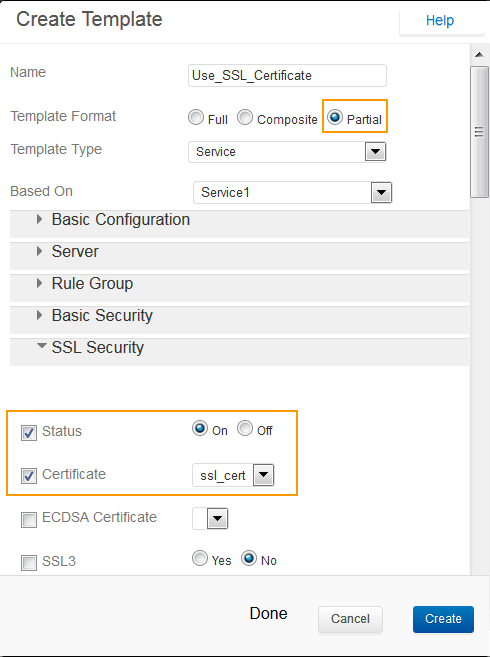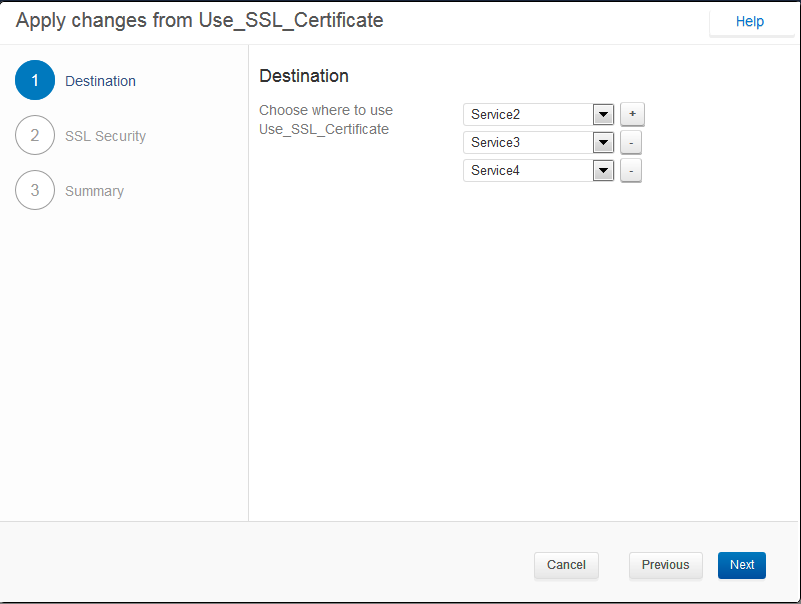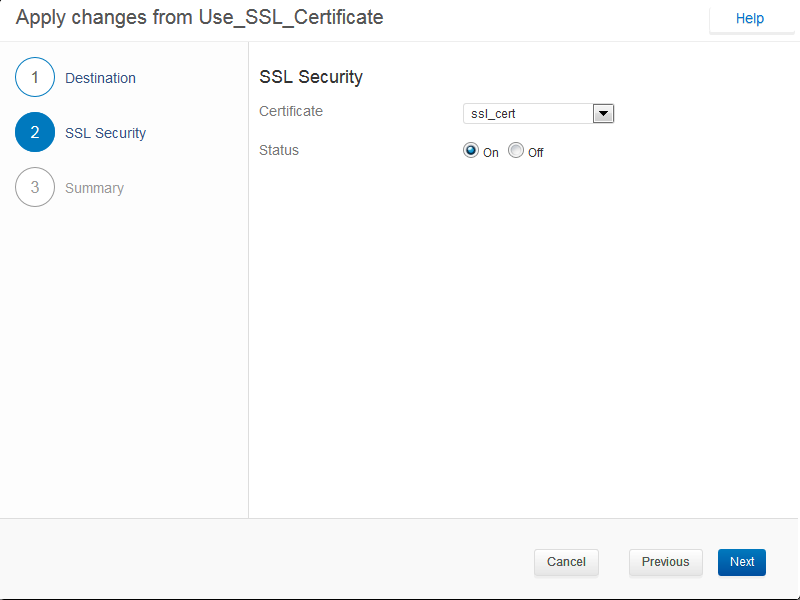Managing application security policies over time and across multiple units manually can become cumbersome and error prone. Templates let you define baseline configuration settings that can be used as a model across policy revisions or across units. For example, by using templates, you can quickly create security policies designed to secure a specific application (e.g., SharePoint), web portal, platform, framework, or their constituents. Templates increase productivity, reduce manual errors and deployment time, and ensure policy compliance.
A template is a reusable configuration file. It represents part of your Barracuda Web Application Firewall’s existing configuration. The template framework provides a wizard-driven interface for creating templates from existing objects or applying created templates to an existing configuration. The configuration components can include a particular object or group of objects. Templates can be created to re-use one or more configuration components at a later time on the same unit or on another Barracuda Web Application Firewall. You can re-use a template by downloading, importing and applying the template to a unit. Templates allow you to do the following:
- Migrate changes from the QA environment to the production environment.
- Import changes provided by the Barracuda Web Application Firewall expert community to refine policies on standard applications.
- Patch existing policies. For example, a new OWA template might need an additional “Allow Method” for a Global ACL, or a new pattern, like sql-tautology-conditions, might require a refinement to an existing pattern group. An existing service might require a new keep-alive timeout, already tested and found optimal in the QA network.
- Take a backup of an application configuration.
Templates can also be used to do the following:
- Create a new configuration on the Barracuda Web Application Firewall from a single unified web interface. For example, a new complete security policy can be created by modifying various security parameters at one time.
- Replicate an object on the same or another Barracuda Web Application Firewall.
You can create three types of templates:
- Full - A Full template represents a configuration object (Refer to Object Type and Dependency Objects). You can create a new object with the desired settings using the Full template option. For example, a Service template includes all (selected) URL Profiles, Parameter Profiles, Rule Groups, URL ACLs, etc., associated with the service. Typically, a Full template includes all relevant information pertaining to an object. You can edit the values of parameters, if required, when creating a template.
- Partial - A Partial template represents part of an object configuration (refer to Object Type and Dependency Objects). With a Partial template, you can update the configuration of existing objects. Applying a Partial template can be considered analogous to performing a Bulk Edit operation. For example, to update the Session Timeout value for multiple service, you can create a template with only the Session Timeout value modified. When this template is applied to the service(s), it only updates the Session Timeout value, keeping other parameter values intact.
- Composite - A Composite template is a group of full templates of the same type of objects (Refer to Object Type and Dependency Objects). You can use a Composite template to migrate multiple objects of the same type from the QA environment to the production environment. For example, to copy URL profiles of an application to another application, you can create a template with selected URL profiles and apply it to an application requiring configuration of these URL profiles. This creates URL profiles on the WEBSITES > Website Profiles page for the selected application.
Creating a Template
To create a template, go to the ADVANCED > Templates, Template Repository section and click Create Template. Select a suitable Template Type, Template Format, and specify which existing object you want to base the template on. You can create a template for a particular object or object type. All configuration relevant to the chosen object gets loaded on the web interface, and you can modify the values before creating the template. Sub-objects can be included/excluded from the template at this time.
Editing Templates
You can edit and modify the configuration settings of a template by selecting the Edit option under the Actions column on the ADVANCED > Templates page. The following operations can be performed using the Edit option:
- Values can be modified (with the exception of a few critical parameters, such as Service Type).
- Sub-objects can be excluded from the template.
- Associated objects like Certificates/Trusted Host Groups can be changed.
Using Templates
You can apply the template by selecting the Use operation in the Available Templates section. The Use operation allows you to apply a template to the selected destination. The Use template wizard displays different key parameters for each object. The wizard layout is as follows:
- Destination: Select a destination to apply the template. For example, if you are applying a URL Profile template, the destination option would be a service because a URL Profile logically exists within a service.
- Provide values for key parameters for each object and sub-objects.
- Review the summary details and click Apply to apply the template.
With the Use template wizard, you can use the same template and create different objects by providing unique values to key parameters.
Importing Templates
A saved template can be imported into the same Barracuda Web Application Firewall or to another Barracuda Web Application Firewall by using the Import Template operation. This operation does not apply the configuration contained in the template, but only copies the template to the file system.
Create and Use a Template
- Go to the ADVANCED > Templates page, Template Repository section, and click Create Template.
- On the Create Template window:
- Enter a name for the template, select the template format, and select the object type.
- Edit the values (if required), and click Create.
If the template has any dependencies, a pop-up window displays the dependency objects.
- After the template is created, it gets displayed in the Template Repository section.
- You can edit the template (if required) by clicking Edit under Actions.
To use the template on the same unit, click Use under Actions. Select the destination and other subsequent settings based on the object type. Review your settings under Summary, and click Apply.
- To use the template on another Barracuda Web Application Firewall, do the following:
- Download the template to your local machine by clicking Download under Actions. The template downloads in ZIP format with the following two (2) files:
- An XML file containing the relevant configuration.
- An HDR file that can be recognized by the Barracuda Web Application Firewall and used for internal purposes.
- Log into the other Barracuda Web Application Firewall where you want to import and use the template, and do the following:
- Go to the ADVANCED > Templates page, Template Repository section, and click Import Template.
- In the Import Template window, enter a name for the template, and click Browse to select the downloaded template. Click Import Template.
- After the template successfully imports, it displays in the Template Repository section.
Now, click Use under Actions. Select the destination and other subsequent settings based on the object type. Review your settings under Summary, and click Apply.
- Download the template to your local machine by clicking Download under Actions. The template downloads in ZIP format with the following two (2) files:
Use Case for Template
Use Case: Associate an SSL certificate used by a service to multiple services
In this use case, assume you created an HTTPS service with an SSL certificate. You want to edit multiple services configured on the Barracuda Web Application Firewall, which should be SSL enabled and assigned the same SSL certificate. This can be achieved by using templates.
The steps below walk you through the use case:
- Go to the BASIC > Services page, and create an HTTPS service with an SSL certificate. Example: Service1. For more information on how to create a service, click Help on the web interface.
- Go to the ADVANCED > Templates page.
- In the Template Repository section, click Create Template. The Create Template window opens.
- In the Create Template window, do the following:
- Name: Enter a name for the template. Example: Use_SSL_Certificate
- Template Format: Select Partial.
- Template Type: Select Service.
- Based On: Select the service you want to base your template on. Example: Service1. This will display all configuration settings of the selected service.
- Click SSL Security and select the Status and Certificate check boxes.
- Click Create.

- The template gets created and displayed in the Template Repository section.

- To associate the SSL certificate with other services, click Use under Actions in the Template Repository section. The Apply changes from “Template-Name” window opens. Example: Apply Changes From Use_SSL_Certificate.
- In the Apply Changes from Use_SSL_Certificate window, do the following:
- Destination: Choose the services to which you want to apply the Use_SSL_Certificate template, and click Next.

- SSL Security: Select the certificate that you want to associate with the service, set the status and click Next.

- Summary: Review the summary details and click Apply to apply the template.

- Destination: Choose the services to which you want to apply the Use_SSL_Certificate template, and click Next.
- The template is now applied to the specified services.

- Go to the BASIC > Services page. You can see that the template is applied to the services.

Points to Remember
While template generation includes configuration data of the sub-objects, it does not include the configuration of external entities/dependencies that the object or sub-object refers to. For example, if you have a policy associated to a service, make sure the policy exists on the destination unit before importing the service. The most common cases of objects like these within a service are: Security Policy, Response Pages, Certificates, Parameter Classes, Rate Control pool, Trusted Hosts, etc.
Object Type and Dependency Objects
A template only contains a reference to dependency objects. This means that when the template is downloaded and imported on another Barracuda Web Application Firewall, the dependencies are not imported. In this case, all dependencies appear as key parameters in the Use Template wizard, and so appropriate dependencies can be referenced before applying the template. For example, when importing a template HTTPS service, the certificate is not imported. While applying the template, the certificate appears as a key parameter in the wizard and an existing certificate on the unit can be associated with the service.
The following table lists each object with its dependency objects:
| Object Type | Objects on which the Object Type is dependent |
|---|---|
| Service | Rate Control Pool |
| Authentication Service | |
| Trusted Hosts Group | |
| Session Identifiers | |
| Web Firewall Policy | |
| Certificate | |
| Server | Client Certificate |
| URL Profile | Custom Blocked Attack Types |
| Parameter Profile | Custom Parameter Class |
| Rule Group Server | Client Certificate |
| URL Policy | Rate Control Pool |
| Secure Browsing Policy | Credential Server |
| URL ACL | Response Page |
| Header ACL | Custom Blocked Attack Types |
| Security Policy | Custom Blocked Attack Types |
| Global ACL | Response Page |
| Data Theft Protection | Custom Identity Theft Type |
| Custom Parameter Class | Custom Blocked Attack Types |
| Custom Input Type Validation | |
| Rule Group | |
| JSON Profile | JSON Security Policy |
| DDoS Policy | |
| Authorization Policy | |
| URL Encryption Rule | |
| URL Translation | |
| Adaptive Profiling Rule | |
| Request Rewrite Policy | |
| Response Rewrite Policy | |
| Response Body Rewrite Policy | |
| Allow/Deny Client | |
| SSL CRL | |
| Trusted Host Group | |
| Trusted Host | |
| LDAP Authentication Service | |
| RADIUS Authentication Service | |
| Kerberos Authentication Service | |
| RSA SecurID Authentication Service | |
| JSON Security Policy | |
| Rate Control Pool | |
| Preferred Client | |
| Response Page | |
| Credential Server | |
| Syslog Server | |
| Custom Identity Theft Protection | |
| Identity Theft Pattern | |
| Custom Attack Type | |
| Attack Type Pattern | |
| Custom Input Type | |
| Input Type Pattern | |
| Static Route |
